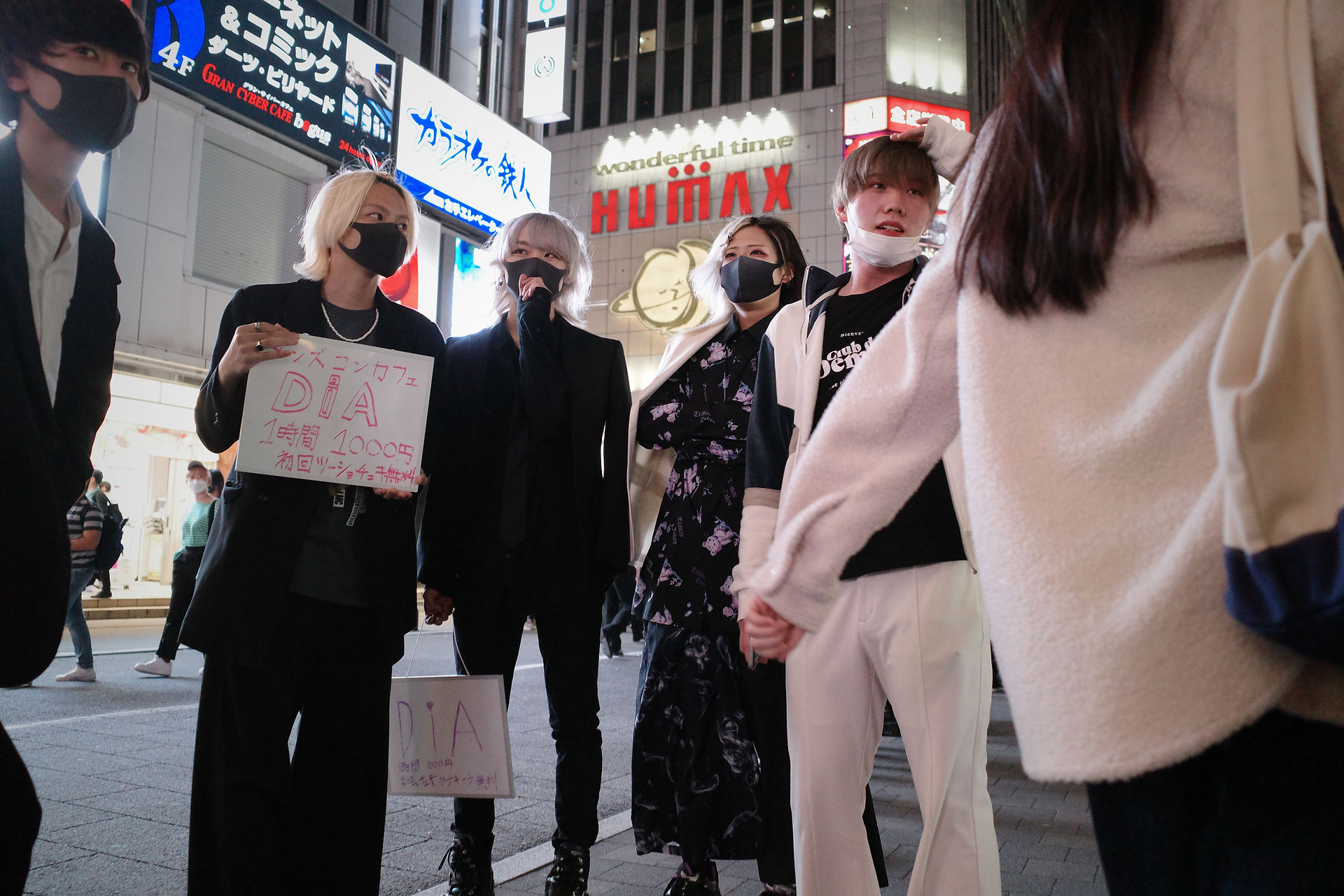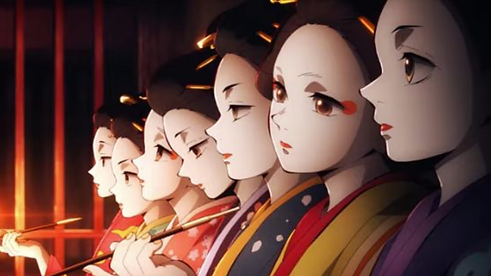
The Utilization of Space
by Nanami
Introduction
Scouts have latent ambiguity in public and private contexts. On the one hand, it is easy to find them in public, such as on streets in Kabuki-cho or underground of Shinjuku east exit. On the other hand, what they actually do is drawing people into private world, where potential workers would turn into private commodities. Hence, scouts function as the gateway to the industry applying tactical strategies to targets. Utilizing those tactical strategies, scouts bring benefits to Kabuki-cho.
To reveal the roles of scouts as a public guidance in terms of prospering the Kabuki-cho economy and how they achieve this goal, it is necessary to understand how scouts bring targets into the industry using strategies: non-verbal communication, verbal communication, attractive appearances, and utilization of spaces. This page will intensively investigate the scouts' utilizations of spaces. Given the background of scouts’ steps in approaching and their reasons to have a hub to reach targets, it will go in depth to thematic analyses.

The connotation of Yoshihara in Edo period (Demon Slayer, n.d.)
What spaces in Kabuki-cho have?
Kabuki-cho has many izakaya, restaurants, night clubs, love hotels, adult entertainments including host/hostess clubs, girls' bars, brothels, and concept cafes. They are overall the entertainment industry. The collection of those types of businesses in one place is the reason why Kabuki-cho is referred to as "Sleepless Town" in Japan. It concentratedly has adult entertainments and businesses involving with trade such as scouts. That is to say, adult entertainments and associated businesses are inevitably gathered in one place. This is actually from a long time ago.
Back in Edo period, Yoshihara, what is now Nihonbashi and Asakusa areas, used to be brothel districts. The word Yoshijara has the connotations such as spending time with workers. The same is true of current night Kabuki-cho.
What is Urban Spaces in Kabuki-cho?
Considering Kabuki-cho as an urban space, as well as many connotations, people often associate Kabuki-cho with extra legality incidents or crimes. Those connotations come from elements that are attached to the space, which are scouts, no less. They are the backdoor driving force to maneuver trade in Kabuki-cho.

As this diagram shows, spaces do not have any connotations at first; however, once scouts were attached to it, it would create different meanings. Involving with the effects of scouts, it turns out to be a place for treasure hunting from tons of pedestrians to detect targets. That is why, connotations of Kabuki-cho now already consisted of both space and scouts there (Takeoka, 2013). That is to say, scouts cannot be scouts without spaces to get targets as Kato also mentions that due to the large number of passengers, all the elements including pachinko, movie theaters, bars, etc. gathered and form the urban space (1968).

All-inclusive contents for industry
Hence, scouts build a strategy by making use of spaces in Kabuki-cho plus scouts themselves. With their insightful eyes on Kabuki-cho’s geography and pedestrians’ movements, scouts take an advantage of the best spaces and knowledge about spaces.
How is it Different from other Urban Spaces ?
Since the circulation of trade can be absolutely completed within Kabuki-cho, scouts do not need to enlarge the range of their workplace out of Kabuki-cho (Takeoka, 2013).
As this map shows, the entrance of the east exit to Kabuki-cho is wide, which is scout’s work space. This means scouts narrow down targets to visitors of Kabuki-cho already. Along the purpose of scouts, once targets become a worker, there is no need for them to get out from Kabuki-cho.
Host/hostess clubs are densely located around the right side on the map. According to Matsuda, hosts/hostesses have 同伴 and アフター, Pre-company and after which refer to meeting with the hostess out of their workplaces with extra charge before or after entering hostess clubs.
Therefore, karaoke boxes, hotel districts, and restaurants are all in Kabuki-cho (2015). Kabuki-cho functions as a net, a large gateway and no exit out from Kabuki-cho.
According to Sugimura, the amusement quarter is not only centralized among urbanites' consumption but also works as a core of urban areas. Concentrative drinking places and entertainment had been allowed to form a nightlife district that raised overall consumption in the urban area (2016). He suggests perfectly demand and supply match and naturally form a nightlife district there.
